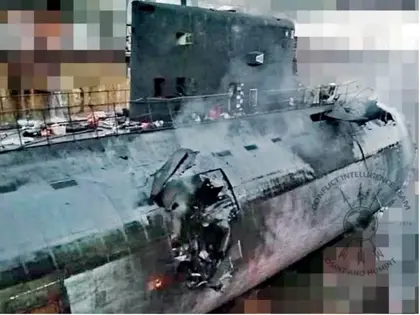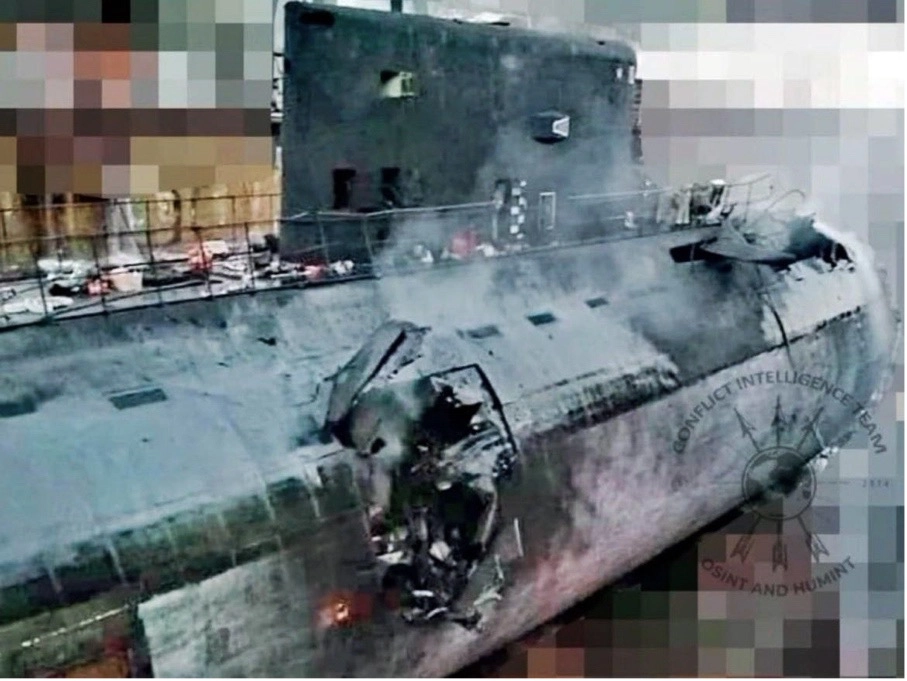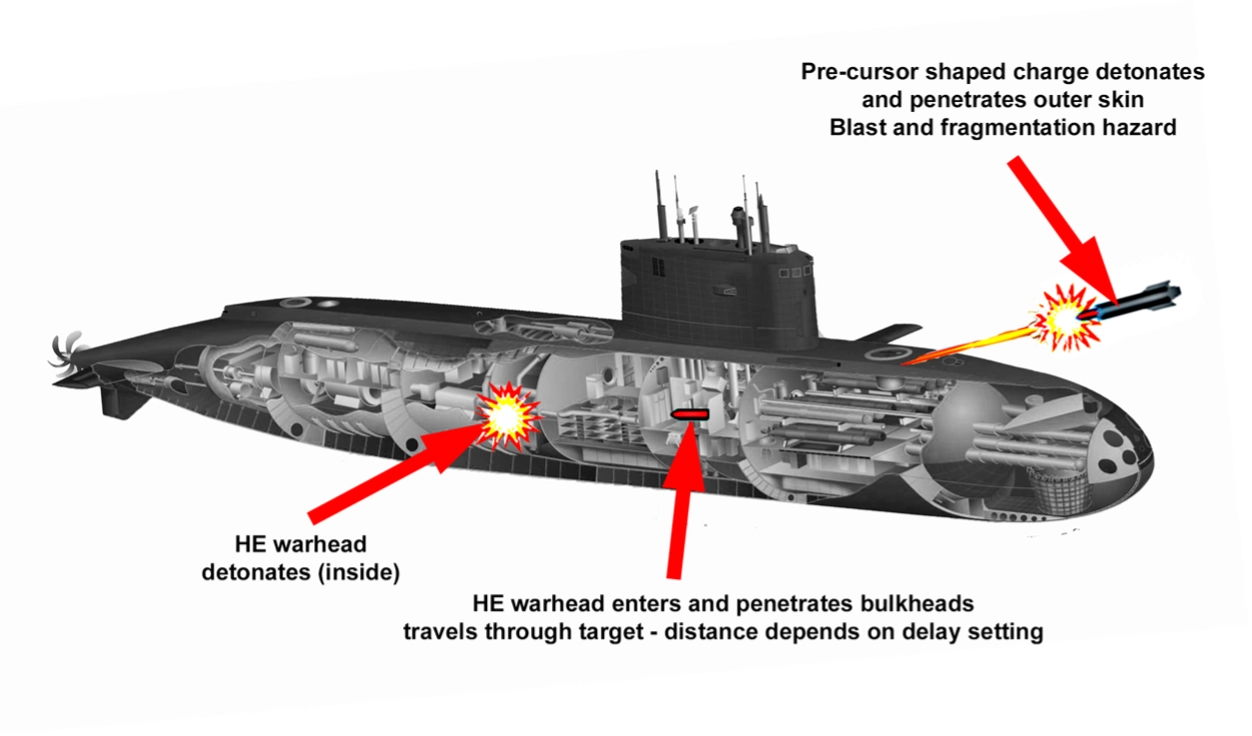Ukraine’s use of the UK-provided Storm Shadow missile to successfully attack on Russia’s Black Sea Fleet (BSF) in its 13th Ship Repair Plant shipyard in occupied Sevastopol on Sept. 13 was hailed as both a technical and strategic success by Kyiv.
Not only did the attack effectively destroy two major naval vessels, the Rostov-on-Don submarine and the large landing ship Minsk, but also had a major strategic knock-on effect.
JOIN US ON TELEGRAM
Follow our coverage of the war on the @Kyivpost_official.
As Kyiv Post reported by Sept. 15 Russia had moved the bulk of the BSF into open water, where they felt less vulnerable to Ukrainian missile attack.
While the loss of the Minsk was certainly a blow to Russia – after all it was the third large surface vessel Ukraine had destroyed – the impact of the submarine’s destruction had even broader implications.
Death of the submarine
In spite of claims by Russia’s defense ministry that it intended to repair the Rostov-on Don, photographs on social media of the damage inflicted showed that the submarine is unlikely to be restored – an assessment shared by the Oryx monitoring group and the UK’s Ministry of Defence (UKMoD).

Moscow Residents Offered $22,000 Military Sign-up Bonus
External photographs of damage to the Rostov-on Don
Photo: Open source / Twitter
The destruction of the submarine was particularly valuable, not only because it has removed a military asset from Russia’s order of battle but also for reasons of both morale and increased security.
Ukraine currently lacks the ability to search for or destroy submerged submarines either through its own ships or anti-submarine aircraft. The positioning of the Rostov-on-Don in dry dock was a window of opportunity that could not be missed. By all accounts Kyiv’s intelligence services used every available asset, including its own special forces, Crimean-based partisans and even disgruntled Russian servicemen, to identify where and when to hit the target.
On paper the BSF has six (now five) Kilo class submarines in its fleet, although some analysts suggest that only four may be operating at any one time. In any event, the loss of one of their submarines is a blow. The effect on morale works in two directions.
For Ukrainians the destruction of the vessel alone is noteworthy, but the fact that one of those responsible for firing Kalibr cruise missiles at Ukrainian cities has been removed is a considerable boost.
For the members of the BSF it must have a detrimental impact on their morale as having lost two vessels in one strike exposes their vulnerability to missile attack and the poor decision-making of their leadership.
Why were the effects of the missile attack so devastating?
Ukraine launches the “fire and forget” Storm Shadow missiles from its modified Sukhoi Su-24M (NATO designated: Fencer) aircraft. The missile was designed primarily as a “bunker buster,” using GPS, terrain mapping and other sensors to deliver the two stage “Bomb Royal Ordnance Augmented Charge” (BROACH) warhead onto its target.
The way this worked against the Rostov-on-Don is illustrated in the diagram below.
On identifying a target, the warhead will be detonated at the optimum distance. The precursor “shaped” charge produces a jet of molten metal which penetrates the outer surface of the target.
In this case it appears to have struck the submarine close to the bow, which is also where the vessel stores its torpedoes and the assortment of land and anti-ship missiles it normally carries. It seems that these must have been removed while the ship was being repaired otherwise the Storm Shadow attack would have been even more devastating.
Having cleared the way, the second part of the warhead, a 450-kilogram high explosive charge enters the target. How far it goes is governed by the time delay set and the obstacles it encounters on the way. Inside the submarine it appears to have battered its way through at least three steel bulkheads before detonating in the area that houses the diesel generators to power the adjacent electrical motors that drive the submarine.
The resulting explosion completely ruptured and peeled back a large area of the double-skinned hull and, while the extent of the internal damage is not evident externally, it is likely to have been so severe that the submarine will not be salvageable according to most experts.
Storm Shadow penetration of Russian submarine
Illustration: Kyiv Post
The UKMoD said that removing the hulks of the Minsk and Rostov-on-Don from the dry dock would be a “complex task… [that] will place them out of use for many months… and present the BSF with a significant challenge in sustaining fleet maintenance.”
You can also highlight the text and press Ctrl + Enter








